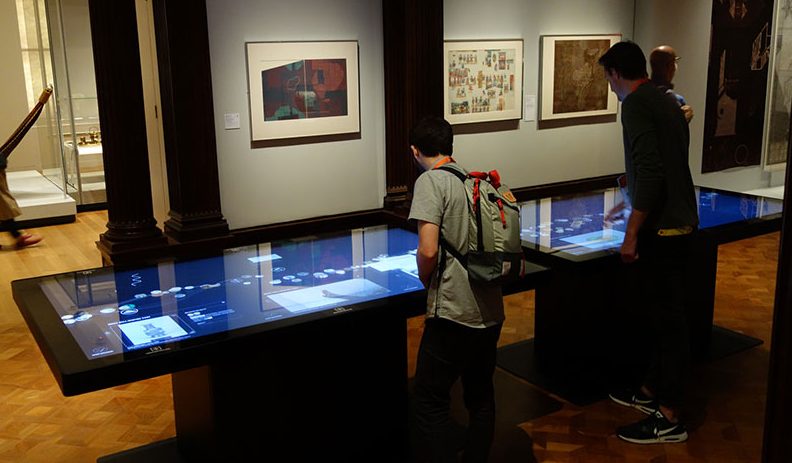Three Approaches for Physical Object Recognition in Tabletop Interactivity

In recent years, interactive technology has gradually infiltrated our daily lives, with tabletop interactivity becoming a popular feature in exhibitions, cafes, and entertainment venues. The emergence of physical object recognition in tabletop interaction, which allows information recognition through real-world objects, has sparked considerable interest. What are the magical ways in which this tabletop interaction is achieved?
1. Rear Projection Object Recognition Table
This approach involves rear projection for tabletop display, with infrared sensors for object recognition installed on the back. Recognition codes are placed on the back of objects. Interaction is realized through QR code recognition, displaying information around the object. The advantage of this rear projection approach is that it is unobstructed. However, the infrared light can be affected by the environment, posing a major limitation.
2. Infrared Frame Object Recognition Table
This implementation of tabletop interaction doesn’t involve projection. Instead, it utilizes a touch-based device with infrared sensors installed on all sides. Any object above the infrared frame within the sensing area can trigger content recognition.
3. Capacitive Screen Object Recognition Table
As the name suggests, this implementation of tabletop interaction relies on capacitance. Placing an object on the capacitive screen essentially creates a conductive surface, enabling tabletop interaction and allowing users to access related information about the object.
These are the three common ways touch object recognition is achieved in tabletop interaction. While each employs a different underlying principle, they all achieve the same outcome. This variety of implementation options provides customers with more choices. With the advent of the technological age, the application of multimedia interactive technologies like these is steadily increasing. We can expect to see even more fascinating interactive technologies in the future.
